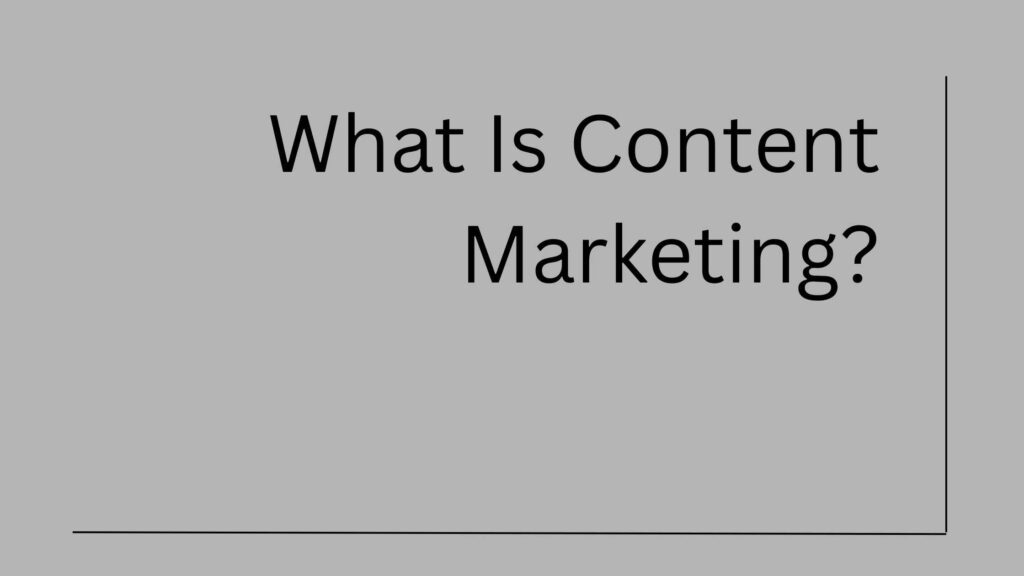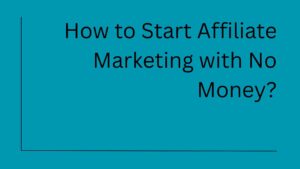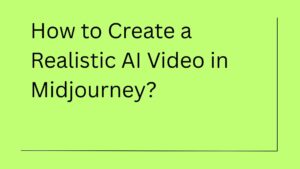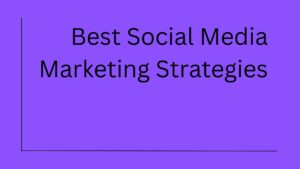Your competitors are publishing content right now. While you read this sentence, they’re creating blog posts, filming videos, and sharing social media updates that could steal your potential customers.
Content marketing isn’t just about producing articles anymore. It’s become the backbone of customer acquisition strategies across every industry. Companies that master content marketing generate 67% more leads than those that don’t. The businesses winning today understand something crucial: customers no longer want to be sold to. They want to be educated, entertained, and engaged.
The shift happened gradually, then suddenly. Traditional advertising lost its grip as consumers gained control over what they consume. Ad blockers, streaming services, and social media changed everything. Now your customers actively seek out valuable information before making purchasing decisions.
Smart marketers adapted. They stopped interrupting customers with irrelevant ads and started creating content that attracts ideal buyers. This approach doesn’t just generate leads, it builds trust, establishes authority, and creates lasting customer relationships.
Your content marketing strategy could be the difference between thriving and merely surviving in today’s competitive landscape. Understanding how to leverage content for business growth isn’t optional; it’s essential for staying relevant.
What Is Content Marketing?
Content marketing represents a strategic digital marketing approach focused on creating and distributing valuable, relevant, and consistent content to attract and retain a clearly defined audience.
The ultimate goal? Drive profitable customer action without directly pitching your products or services.
Think of content marketing as relationship building at scale. Instead of interrupting prospects with sales messages, you provide solutions to their problems through helpful content. This positions your business as a trusted advisor rather than just another vendor.
The approach differs fundamentally from traditional advertising. Traditional marketing pushes messages at audiences, hoping something sticks. Content marketing pulls audiences toward your business by offering genuine value first.
Modern consumers research extensively before making purchasing decisions. They read reviews, compare options, and seek educational content about their challenges. Content marketing meets customers exactly where they are in this research process.
Your content serves multiple purposes simultaneously. It educates prospects about problems they might not realize they have. It demonstrates your expertise in solving those problems. It builds trust through consistent value delivery. Most importantly, it guides prospects through their buying journey naturally.
Content marketing works because it addresses a fundamental truth: people prefer buying from brands they know, like, and trust. Content helps establish all three elements systematically.
The strategy requires patience and consistency. Unlike paid advertising that delivers immediate visibility, content marketing builds momentum over time. The payoff justifies the investment. Businesses using content marketing see conversion rates six times higher than those that don’t.
Why Content Marketing Dominates Other Modern Marketing Strategies?
Customer Behavior Has Permanently Shifted
Today’s customers control their buying journey completely. They research independently, compare options extensively, and make decisions on their timeline. Traditional sales processes that relied on controlling information flow no longer work.
Consider this reality: 70% of the buyer’s journey happens before prospects contact sales teams. Your content needs to guide prospects through most of their decision-making process before they’re ready to engage directly.
Search engines have become the starting point for virtually every buying decision. When prospects search for solutions to their problems, your content determines whether they discover your business or your competitors’. Missing from search results means missing from consideration entirely.
Content Marketing Delivers Measurable ROI
Content marketing costs 62% less than traditional marketing while generating more than three times as many leads. The economics favor businesses that invest in content creation over those relying solely on paid advertising.
Your content assets appreciate over time rather than depreciate. A well-optimized blog post can generate leads for years after publication. Paid ads stop producing results the moment you stop paying.
The compound effect of consistent content creation creates sustainable competitive advantages. Each piece of content builds on previous work, expanding your digital footprint and increasing discovery opportunities.
Trust and Authority Drive Purchase Decisions
Customers buy from businesses they perceive as experts in their field. Content marketing establishes thought leadership more effectively than any other marketing approach.
Regular publication of helpful, insightful content demonstrates your understanding of customer challenges and your ability to solve them. This perceived expertise translates directly into increased sales and higher prices.
Content also handles objections and concerns before prospects even contact your sales team. Addressing common questions through content improves sales conversion rates and reduces sales cycle length.
Types of Content Marketing That Drive Results
Your content marketing strategy should include multiple content types to reach different learning preferences and consumption habits. Each format serves specific purposes in your overall marketing ecosystem.
1. Blog Content Marketing
Blog content forms the cornerstone of most successful content marketing strategies. Blogs provide platforms for addressing customer questions, targeting search keywords, and demonstrating expertise consistently.
Strategic advantages of blog marketing:
- Search engine optimization opportunities through targeted keyword content
- Lead generation through downloadable resources and newsletter signups
- Sales enablement through educational content that addresses buyer concerns
- Customer support through FAQ-style posts and troubleshooting guides
- Thought leadership establishment through industry insights and trend analysis
Regular blogging signals active business management to both search engines and prospects. Companies that blog receive 97% more links to their websites than those that don’t, directly improving search rankings and visibility.
Your blog content should balance educational value with subtle business promotion. The 80/20 rule works well: 80% pure value, 20% business-related content. This ratio maintains audience engagement while advancing business objectives.
2. Video Content Marketing
Video content generates higher engagement rates than any other content format. Viewers retain 95% of messages when watching videos compared to 10% when reading text. This retention difference makes video essential for complex product explanations and brand storytelling.
Video content opportunities include:
- Product demonstrations that showcase features and benefits clearly
- Customer testimonial videos that provide social proof
- Educational tutorials that establish expertise while helping customers
- Behind-the-scenes content that humanizes your brand
- Live streaming for real-time audience engagement
- Webinar content for lead generation and qualification
Video content performs exceptionally well across all social media platforms. Algorithm changes consistently favor video content, meaning your video posts reach more people organically than text or image posts.
Production costs have decreased dramatically while quality standards have become more realistic. Smartphone videos often outperform expensive productions because they feel authentic and relatable. So, it’s better to know why aligning your video content with the marketing objectives is important.
3. Social Media Content Marketing
Social media content marketing focuses on building communities around your brand rather than direct selling. Each platform requires different content approaches based on user behavior and platform features.
Platform-specific strategies:
- LinkedIn: Professional insights, industry trends, and thought leadership content
- Instagram: Visual storytelling through photos, stories, and short videos
- Facebook: Community building through groups and interactive content
- Twitter: Real-time engagement, customer service, and industry discussions
- YouTube: Long-form educational content and entertainment
- TikTok: Creative, authentic content that showcases personality
Social media content amplifies your other marketing efforts. Blog posts shared on social media reach wider audiences. Video content gains additional views. Customer testimonials become social proof that influences purchasing decisions.
The key to social media success lies in understanding platform cultures and user expectations. Content that works on LinkedIn might fail on TikTok. Tailor your approach to each platform while maintaining consistent brand messaging.
4. Email Content Marketing
Email marketing delivers the highest ROI of any digital marketing channel $42 for every dollar spent. Email content allows personalized communication that builds stronger customer relationships over time.
Effective email content strategies:
- Welcome series that educate new subscribers about your business
- Newsletter content that provides ongoing value to maintain engagement
- Product education sequences that guide customers through complex purchases
- Customer success stories that demonstrate value and encourage referrals
- Promotional content that drives sales without overwhelming subscribers
Email segmentation dramatically improves content effectiveness. Sending relevant content to specific audience segments increases open rates by 14% and click-through rates by 100%.
Your email content should feel conversational and personal rather than corporate and salesy. Subscribers respond better to emails that sound like they’re from real people rather than marketing departments.
5. Podcast Content Marketing
Podcast consumption continues growing rapidly, with over 100 million Americans listening to podcasts weekly. This format allows deeper relationship building through longer-form content and consistent audience interaction.
Podcast content advantages:
- Thought leadership establishment through expert interviews and insights
- Audience intimacy through voice-based communication
- Content repurposing opportunities across multiple formats
- Network building through guest appearances and collaborations
- Brand awareness expansion through podcast directories and platforms
Podcast content works well for businesses targeting professional audiences who consume audio content during commutes or exercise. The format allows complex topic exploration that shorter content formats can’t accommodate.
Starting a podcast requires less technical expertise than many people assume. Basic recording equipment and editing software can produce professional-quality content that serves business objectives effectively.
6. Visual Content Marketing
Visual content, including infographics, images, and design elements, communicates information quickly and memorably. Visual content gets shared 40 times more often than text content on social media platforms.
Visual content applications:
- Infographics that simplify complex information for easy understanding
- Social media graphics that increase engagement and sharing
- Website imagery that supports written content and improves user experience
- Product photography that showcases offerings effectively
- Brand design elements that create consistent visual identity
Visual content performs particularly well for businesses with complex products or services that benefit from visual explanation. Technical companies, healthcare providers, and financial services can use visuals to make complicated concepts accessible.
Quality matters significantly with visual content. Poor-quality images or design elements can damage brand perception rather than enhance it. Invest in professional design resources or high-quality stock imagery.
Essential Elements of Effective Content Marketing
Your content marketing success depends on strategic execution rather than random content creation. Every piece of content should serve specific business objectives while providing genuine value to your audience.
1. Create Customer-Focused Content
Your content must address real customer problems and provide actionable solutions. Generic, self-promotional content fails to engage audiences or drive business results.
Start by understanding your customers’ pain points, goals, and information needs throughout their buying journey. Create content that helps them make progress toward their objectives rather than content that serves your business interests exclusively.
Research customer questions through social media monitoring, sales team feedback, and direct customer surveys. The problems your customers actually face should drive your content calendar rather than the topics you want to discuss.
2. Develop Content Variety for Different Learning Styles
People consume and process information differently. Some prefer reading detailed articles. Others learn better through videos or audio content. Your content mix should accommodate various learning preferences.
Content format variety includes:
- Written content for readers who prefer detailed information
- Video content for visual learners who need demonstrations
- Audio content for people who learn through listening
- Interactive content for hands-on learners who prefer engagement
- Visual content for quick information processing
This variety also improves your search engine optimization by providing multiple ways for people to discover your business through different types of searches.
3. Maintain Consistent Publishing Schedules
Content marketing momentum builds through consistency rather than sporadic high-quality posts. Regular publishing schedules help audiences know when to expect new content while signaling active business management to search engines.
Consistency matters more than frequency. Publishing one high-quality blog post weekly consistently outperforms publishing three posts one week then nothing for a month.
Create realistic publishing schedules that your team can maintain long-term. Ambitious schedules that lead to burnout hurt your content marketing more than conservative schedules maintained consistently.
4. Optimize Content for Search Discovery
Your best content means nothing if your target audience can’t find it. Search engine optimization ensures your content appears when prospects search for information about their problems.
SEO optimization includes:
- Keyword research to understand how customers search for solutions
- Title optimization that includes relevant keywords naturally
- Content structure that makes information easy to scan and understand
- Internal linking that guides readers to related helpful content
- Meta descriptions that encourage clicks from search results
SEO optimization takes time to show results, but the investment pays dividends through increased organic traffic and lead generation over time.
5. Include Clear Calls to Action(CTA)
Every piece of content should guide readers toward the next logical step in their relationship with your business. Clear calls to action convert content consumption into business results.
Your calls to action should match the content context and reader intent. Educational blog posts might encourage newsletter signups or resource downloads. Product-focused content might direct readers to request demos or consultations.
Avoid overwhelming readers with multiple competing calls to action. Focus on one primary action per piece of content for better conversion rates.
Content Marketing Strategy Development
Successful content marketing requires strategic planning rather than ad hoc content creation. Your strategy should align content efforts with business objectives while serving customer needs effectively.
Define Your Content Marketing Mission
Your content marketing mission statement clarifies why you create content and what value you provide to audiences. This mission guides content decisions and ensures consistency across all marketing efforts.
Effective mission statements answer three questions:
- What problems do you solve for customers?
- How does your content help solve those problems?
- What makes your approach unique or valuable?
Your mission should inspire your team while resonating with your target audience’s needs and interests.
Identify Key Performance Indicators
Content marketing success requires measurable goals that connect to business outcomes. Vanity metrics like page views don’t indicate business impact unless they correlate with lead generation or sales growth.
Meaningful content marketing metrics include:
- Lead generation through content offers and newsletter signups
- Sales-qualified leads attributed to content consumption
- Customer acquisition cost improvements through content marketing
- Sales cycle length reduction through educational content
- Customer retention improvements through ongoing value delivery
Track metrics that matter to your business rather than metrics that make your reports look impressive.
Understand Your Target Audience Deeply
Content marketing effectiveness depends on audience understanding. Generic content targeting everyone resonates with no one. Specific content addressing particular audience segments drives better engagement and business results.
Develop detailed buyer personas that include demographic information, pain points, goals, information consumption preferences, and buying behavior patterns. Use these personas to guide content creation decisions.
Regular audience research keeps your understanding current as customer needs and preferences evolve. Survey customers, monitor social media conversations, and analyze content performance data to refine your audience knowledge.
Plan Content Around the Customer Journey
Different content serves different purposes throughout the customer buying process. Awareness-stage content introduces problems and solutions. Consideration-stage content compares options and approaches. Decision-stage content addresses specific objections and concerns.
Journey-based content planning:
- Awareness stage: Educational content that identifies problems and introduces solutions
- Consideration stage: Comparison content that helps evaluate options
- Decision stage: Proof-based content that demonstrates value and addresses concerns
- Customer stage: Success content that maximizes value and encourages referrals
Mapping content to customer journey stages ensures you provide the right information at the right time to guide prospects toward purchasing decisions.
Content Distribution and Promotion Strategies
Creating great content represents only half of content marketing success. Strategic distribution ensures your content reaches intended audiences and drives business results.
Owned Media Distribution
Your owned media channels provide complete control over content presentation and audience experience. These channels form the foundation of your content distribution strategy.
Primary owned media channels:
- Your website blog as the central content hub
- Email newsletters for direct subscriber communication
- Social media profiles for community building and engagement
- Mobile apps for enhanced customer experience and retention
Focus on building owned media audiences rather than relying exclusively on rented media platforms. Algorithm changes and platform policies can eliminate your reach overnight on rented media.
Earned Media Amplification
Earned media occurs when others share, mention, or link to your content voluntarily. This amplification extends your content reach while building credibility through third-party endorsement.
Earned media strategies include:
- Creating shareable content that provides significant value
- Building relationships with industry influencers and journalists
- Guest posting on relevant industry publications and websites
- Speaking at conferences and events to share expertise
- Collaborating with complementary businesses on content projects
Earned media often delivers higher-quality traffic than paid promotion because audiences trust third-party recommendations more than direct advertising.
Paid Media Enhancement
Paid promotion can accelerate content marketing results by expanding reach beyond your organic audience. Strategic paid promotion targets specific audience segments with relevant content.
Effective paid promotion strategies:
- Social media advertising targeting specific demographics and interest groups
- Search engine advertising for high-intent keyword searches
- Content promotion through industry publications and websites
- Influencer partnerships for authentic third-party endorsements
- Email list building through lead magnet promotion
Paid promotion works best when used to amplify high-performing organic content rather than trying to force engagement with mediocre content.
Content Marketing Success Measurement
Your content marketing investment requires measurable returns that connect to business growth. Tracking the right metrics helps optimize strategies and demonstrate marketing value to stakeholders.
Revenue Attribution Tracking
The most important content marketing metrics connect content consumption to revenue generation. Understanding which content influences purchasing decisions helps optimize future content investments.
Revenue tracking methods:
- Marketing automation systems that track content engagement through sales cycles
- Customer surveys that identify content influences on purchasing decisions
- Sales team feedback about content usage during prospect conversations
- Website analytics that show content paths leading to conversions
- Attribution modeling that assigns revenue credit to multiple touchpoints
Focus on content that generates qualified leads and influences purchasing decisions rather than content that simply generates traffic or social media engagement.
Audience Growth and Engagement
Building engaged audiences creates lasting business assets that support long-term growth. Track audience development across all content channels to understand relationship building progress.
Audience metrics include:
- Email subscriber growth and engagement rates
- Social media follower growth and interaction levels
- Website visitor return rates and session duration
- Content sharing rates and viral coefficient calculations
- Community participation levels and user-generated content
Engaged audiences provide higher lifetime value than large disengaged audiences. Focus on building meaningful relationships rather than vanity metrics.
Content Marketing Performance Analysis
Understanding which content types and topics resonate most with your audience helps optimize future content creation efforts. Regular performance analysis improves content marketing efficiency over time.
Performance analysis includes:
- Content engagement rates across different formats and topics
- Search engine ranking improvements for target keywords
- Lead generation performance by content type and distribution channel
- Customer journey analysis showing content consumption patterns
- Competitive content analysis identifying opportunities and gaps
Use performance data to double down on successful content approaches while eliminating or improving underperforming content types.
Content Marketing Examples That Drive Business Results
Learning from successful content marketing examples helps identify strategies and tactics that work across different industries and business models.
B2B Software Company Success Story
HubSpot built a billion-dollar business largely through content marketing. Their strategy focused on creating comprehensive educational resources for marketers, sales professionals, and business owners.
Key elements of their success:
- Extensive blog covering all aspects of inbound marketing and sales
- Free tools and resources that provide immediate value to users
- Educational courses and certifications that establish thought leadership
- Regular research reports that generate media coverage and backlinks
- Active social media presence that amplifies content reach
HubSpot’s content marketing generates over 100,000 leads monthly while building a community of loyal customers and advocates.
E-commerce Retailer Growth Strategy
Dollar Shave Club disrupted the razor industry through viral video content marketing. Their approach focused on entertainment value while clearly communicating product benefits.
Success factors:
- Humorous, memorable content that generated organic sharing
- Clear value proposition communicated through entertaining storytelling
- Consistent brand personality across all content and marketing channels
- User-generated content that provided social proof and engagement
- Strategic distribution across multiple platforms and channels
Their content marketing approach generated millions of customers and led to a $1 billion acquisition of Dollar Shave Club by Unilever.
Professional Services Firm Authority Building
Marcus Sheridan’s pool company, River Pools, transformed its business through content marketing by answering every customer question honestly through blog posts and videos.
Their approach included:
- Comprehensive buyer’s guides addressing all customer concerns
- Honest discussions of product limitations and comparisons with competitors
- Video content showing installation processes and product demonstrations
- Customer success stories that provide social proof and build trust
- SEO-optimized content targeting buyer intent keywords
This content marketing strategy generated over 600% business growth while establishing them as the industry’s most trusted resource.
Advanced Content Marketing Tactics
As your content marketing matures, advanced strategies can accelerate growth and competitive differentiation. These tactics require more sophisticated execution but deliver proportionally better results.
Content Personalization at Scale
Personalized content delivers five to eight times higher ROI than generic content marketing. Advanced personalization uses data and automation to deliver relevant content to specific audience segments automatically.
Personalization strategies include:
- Dynamic website content that changes based on visitor behavior and demographics
- Email marketing sequences triggered by specific actions and interests
- Social media advertising targeted to detailed customer personas
- Content recommendations based on previous consumption patterns
- Account-based marketing content designed for specific prospects
Personalization requires investment in marketing technology and data analysis capabilities, but the results justify the complexity for businesses ready to scale their content marketing.
Interactive Content Experiences
Interactive content generates 2x more conversions than passive content by engaging audiences actively rather than passively. This format works particularly well for complex products and services that benefit from guided exploration.
Interactive content formats:
- Calculators and assessment tools that provide personalized insights
- Interactive infographics that allow user-controlled information exploration
- Quizzes and surveys that segment audiences while providing entertainment
- Virtual product demonstrations and augmented reality experiences
- Interactive webinars with polls, Q&A, and breakout sessions
Interactive content requires more development resources but creates memorable experiences that differentiate your business from competitors using only static content.
Community Building Through Content
Building communities around your content creates sustainable competitive advantages that competitors can’t easily replicate. Communities generate user-generated content, provide customer feedback, and create referral networks.
Community building strategies:
- Social media groups focused on industry topics rather than direct promotion
- Online forums and discussion platforms hosted on your website
- User conferences and events that bring community members together
- Collaborative content projects involving community members
- Recognition programs that celebrate community contributors
Communities require ongoing management and engagement, but they create business assets that appreciate over time and provide multiple benefits beyond direct content marketing.
Future of Content Marketing Strategy
Content marketing continues evolving as technology advances and consumer behavior changes. Understanding emerging trends helps businesses prepare for future opportunities and challenges.
Artificial Intelligence Integration
AI tools are transforming content creation, distribution, and optimization. Smart businesses will leverage AI to enhance human creativity rather than replace it entirely.
AI applications include:
- Content research and topic identification based on audience interests
- Writing assistance and editing tools that improve content quality
- Personalization engines that deliver relevant content automatically
- Performance prediction models that forecast content success
- Voice and visual search optimization for emerging search behaviors
AI democratizes content marketing by making sophisticated tools accessible to smaller businesses while allowing larger companies to scale content production efficiently.
Video and Visual Content Dominance
Visual content consumption continues growing across all demographics and platforms. Businesses that master video and visual content will have significant advantages over text-focused competitors.
Visual content trends include:
- Short-form video content optimized for social media consumption
- Live streaming for real-time audience engagement and authenticity
- Interactive video experiences that guide viewer choices
- Virtual and augmented reality content for immersive brand experiences
- Visual search optimization for discovery through image-based queries
Investment in visual content capabilities becomes essential rather than optional as audiences increasingly prefer visual information consumption.
Privacy-First Marketing Approaches
Increasing privacy regulations and consumer awareness require new approaches to audience understanding and content personalization. Successful businesses will build trust through transparent data practices while delivering relevant content experiences.
Privacy-conscious strategies include:
- First-party data collection through valuable content offers
- Transparent privacy policies and data usage explanations
- Zero-party data strategies that rely on voluntary customer information sharing
- Context-based personalization rather than tracking-based approaches
- Community building that generates insights through voluntary participation
Businesses that prioritize customer privacy while delivering valuable content will build stronger, more sustainable relationships with their audiences.
Conclusion
Content marketing represents the most effective long-term strategy for building business growth in the digital age. Your investment in content marketing compounds over time, creating valuable business assets that generate leads, build authority, and drive sales for years after creation.
The businesses thriving tomorrow will be those that start building their content marketing capabilities today. Your competitors are already creating content. The question isn’t whether you should invest in content marketing, it’s whether you can afford not to start immediately.
FAQs About Content Marketing
Unlike paid ads that generate instant visibility, content marketing is a long-term strategy. On average, businesses start seeing meaningful results within 6–9 months of consistent publishing. The timeline depends on factors like competition, content quality, SEO optimization, and how often you publish.
Yes. In fact, content marketing levels the playing field. Smaller businesses can win by focusing on niche topics, authentic storytelling, and building strong relationships with their audience. Large brands may have bigger budgets, but small businesses often connect more personally and build trust faster.
Storytelling helps transform plain information into memorable experiences. Instead of just listing product features, stories show real-world use cases, customer journeys, or challenges your business has solved. This human element makes your content more relatable and helps audiences emotionally connect with your brand.
Repurposing involves taking one piece of content and adapting it into multiple formats. For example, a blog post can become a video script, a podcast episode, a LinkedIn carousel, or even an infographic. This saves time, expands reach across platforms, and maximizes the value of every piece of content you create.
A common mistake is creating content without a clear purpose or alignment with audience needs. Many businesses focus too much on quantity over quality, resulting in generic posts that don’t engage. Successful content always ties back to a strategy, customer intent, and measurable business goals.
Content marketing works as the foundation of most digital marketing efforts. It fuels SEO, supports social media engagement, strengthens email campaigns, and even improves paid advertising results. High-quality content ensures all other marketing channels perform better because it gives audiences a reason to engage and trust your brand.






2 thoughts on “What Is Content Marketing? A Complete Guide to Start Exploring”
This is what I expected before landing on the page in the evening; I loved it.
Great post! Simple, concise, useful, and well-presented. Thank you!